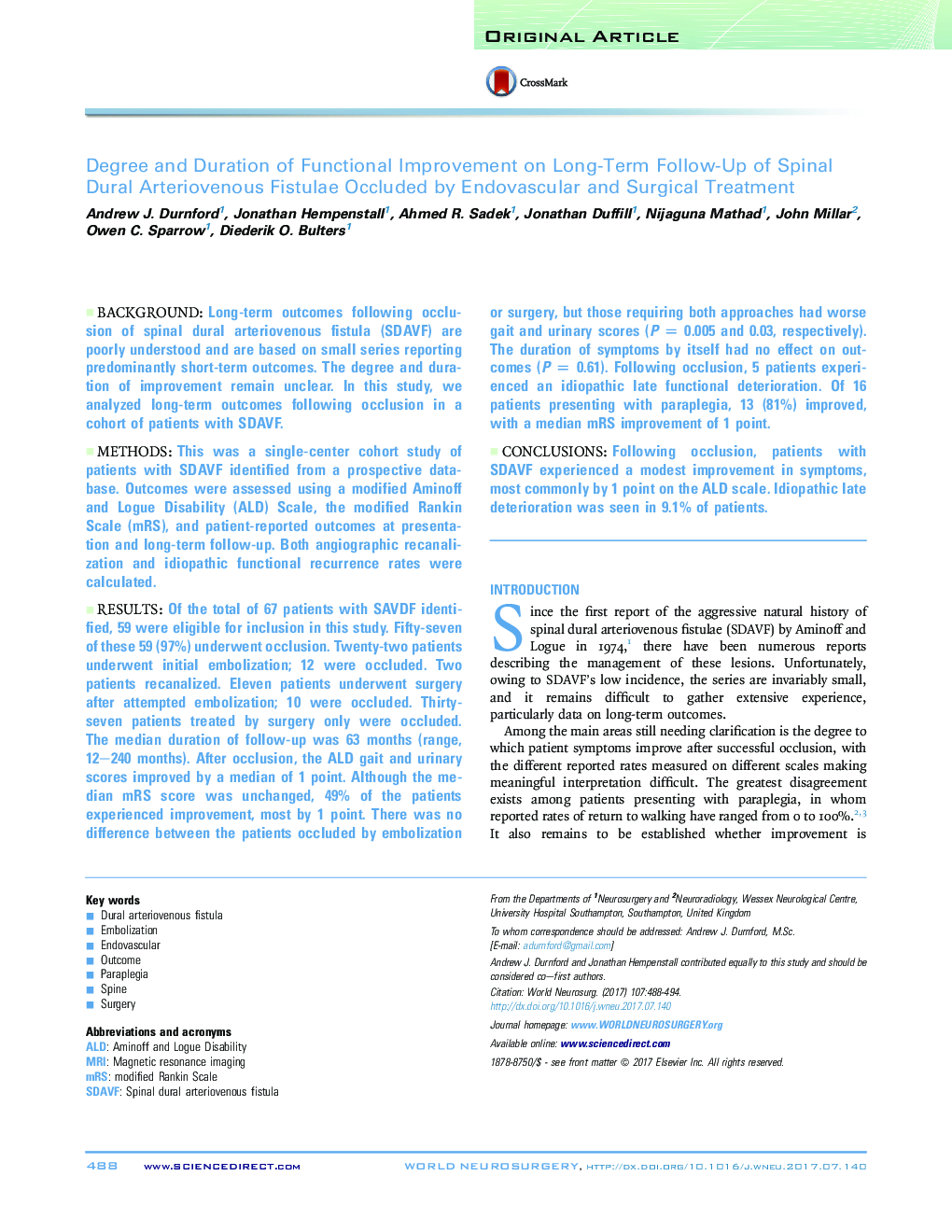| کد مقاله | کد نشریه | سال انتشار | مقاله انگلیسی | نسخه تمام متن |
|---|---|---|---|---|
| 5633910 | 1581448 | 2017 | 7 صفحه PDF | دانلود رایگان |
BackgroundLong-term outcomes following occlusion of spinal dural arteriovenous fistula (SDAVF) are poorly understood and are based on small series reporting predominantly short-term outcomes. The degree and duration of improvement remain unclear. In this study, we analyzed long-term outcomes following occlusion in a cohort of patients with SDAVF.MethodsThis was a single-center cohort study of patients with SDAVF identified from a prospective database. Outcomes were assessed using a modified Aminoff and Logue Disability (ALD) Scale, the modified Rankin Scale (mRS), and patient-reported outcomes at presentation and long-term follow-up. Both angiographic recanalization and idiopathic functional recurrence rates were calculated.ResultsOf the total of 67 patients with SAVDF identified, 59 were eligible for inclusion in this study. Fifty-seven of these 59 (97%) underwent occlusion. Twenty-two patients underwent initial embolization; 12 were occluded. Two patients recanalized. Eleven patients underwent surgery after attempted embolization; 10 were occluded. Thirty-seven patients treated by surgery only were occluded. The median duration of follow-up was 63 months (range, 12-240 months). After occlusion, the ALD gait and urinary scores improved by a median of 1 point. Although the median mRS score was unchanged, 49% of the patients experienced improvement, most by 1 point. There was no difference between the patients occluded by embolization or surgery, but those requiring both approaches had worse gait and urinary scores (PÂ = 0.005 and 0.03, respectively). The duration of symptoms by itself had no effect on outcomes (PÂ = 0.61). Following occlusion, 5 patients experienced an idiopathic late functional deterioration. Of 16 patients presenting with paraplegia, 13 (81%) improved, with a median mRS improvement of 1 point.ConclusionsFollowing occlusion, patients with SDAVF experienced a modest improvement in symptoms, most commonly by 1 point on the ALD scale. Idiopathic late deterioration was seen in 9.1% of patients.
Journal: World Neurosurgery - Volume 107, November 2017, Pages 488-494
